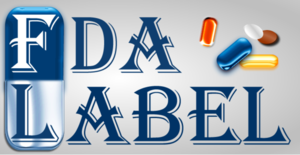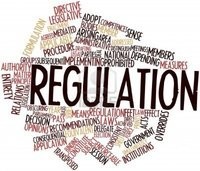The US Food and Drug Administration (FDA) on 2 December 2016 published final guidance for completing the clinical pharmacology section of labelling for human prescription drugs, which includes originator drugs, generics and biologicals.
FDA issues final guidance on pharmacology labelling
Home/Guidelines
|
Posted 09/12/2016
 0
Post your comment
0
Post your comment

The guidance states that ‘important clinical pharmacology attributes to consider in therapeutic decision making include, but are not limited to, drug mechanism of action, pharmacodynamics (PD) (e.g. both on-target and off-target pathways), and pharmacokinetics (PK) in a variety of settings and specific populations’. Adding that ‘clinical pharmacology information collected throughout a drug’s life cycle can contribute to clinical decision making and may be appropriate for inclusion in a drug’s labelling’.
Clinical Pharmacology Section of Labeling for Human Prescription Drug and Biological Products – Content and Format
Date: December 2016
http://www.fda.gov/downloads/Drugs/GuidanceComplianceRegulatoryInformation/Guidances/UCM109739.pdf
The guidance includes detailed descriptions of what information should be included in the clinical pharmacology section of the labelling for drugs, both for new submissions and for amendments to the product labelling. This, according to FDA, should include ‘the pharmacologic and PK attributes of parent drug and metabolites that contribute to the overall efficacy or toxicity of a drug in a meaningful way’.
One clarification included in the guidance is that companies should express dosages outside the approved recommended dosage range in terms of the highest and lowest dosages. For example, ‘50 milligrams (mg) (0.5 times the lowest approved recommended dosage) to 400 mg (2 times the highest approved recommended dosage) assuming the approved recommended dosages are 100 mg and 200 mg’.
While in the subsection on ‘Mechanism of Action’ (MOA), FDA clarifies that ‘the MOA for indications or uses not included in the INDICATIONS AND USAGE section of the labeling must not be included’.
Labelling for biologicals, including biosimilars, is a controversial issue. Extra requirements have been demanded by some groups in order to ensure that clinicians, prescribers and/or patients receive adequate information to enable the safe and efficient use of biologicals [1].
Related articles
FDA issues guidance on self-identification for generics makers
FDA on interchangeability and demonstrating biosimilarity
Reference
1. Jensen AR. US FDA proposals for naming of biologicals and labelling of biosimilars. Generics and Biosimilars Initiative Journal (GaBI Journal). 2016;5(3):140-3. doi:10.5639/gabij.2016.0503.036
Permission granted to reproduce for personal and non-commercial use only. All other reproduction, copy or reprinting of all or part of any ‘Content’ found on this website is strictly prohibited without the prior consent of the publisher. Contact the publisher to obtain permission before redistributing.
Copyright – Unless otherwise stated all contents of this website are © 2016 Pro Pharma Communications International. All Rights Reserved.
Source: US FDA
Policies & Legislation
Argentina streamlines drug approval process
ANVISA tackles 24-month backlog in biologicals post-registration petitions
Most viewed articles
The best selling biotechnology drugs of 2008: the next biosimilars targets
Global biosimilars guideline development – EGA’s perspective
New guidance for biologicals in Pakistan and Hong Kong’s independent drug regulatory authority

Home/Guidelines Posted 20/10/2025
Canada poised to remove requirement for Phase III trials for biosimilars

Home/Guidelines Posted 22/07/2025
The best selling biotechnology drugs of 2008: the next biosimilars targets








Post your comment